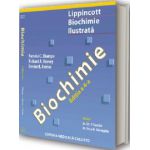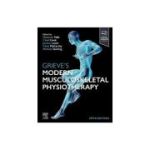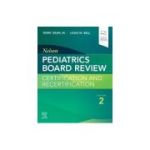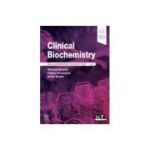Epigenetic Biomarkers and Diagnostics

DESCRIERE
Key Features
- Focuses on recent progress in several areas of epigenetics, general concepts regarding epigenetics, and the future prospects of this discipline in clinical diagnostics and prognostics
- Describes the importance of the quality of samples and clinical associated data, and also the ethical issues for epigenetic diagnostics
- Discusses the advances in epigenomics technologies, including next-generation sequencing based tools and applications
- Expounds on the utility of epigenetic biomarkers for diagnosis and prognosis of several diseases, highlighting the study of these biomarkers in cancer, cardiovascular and metabolic diseases, infertility, and infectious diseases
- Includes a special section that discusses the relevance of biobanks in the maintenance of high quality biosamples and clinical-associated data, and the relevance of the ethical aspects in epigenetic studies
Epigenetic Biomarkers and Diagnostics comprises 31 chapters contributed by leading active researchers in basic and clinical epigenetics. The book begins with the basis of epigenetic mechanisms and descriptions of epigenetic biomarkers that can be used in clinical diagnostics and prognostics. It goes on to discuss classical methods and next generation sequencing-based technologies to discover and analyze epigenetic biomarkers. The book concludes with an account of DNA methylation, post-translational modifications and noncoding RNAs as the most promising biomarkers for cancer (i. e. breast, lung, colon, etc.), metabolic disorders (i. e. diabetes and obesity), autoimmune diseases, infertility, allergy, infectious diseases, and neurological disorders.
The book describes the challenging aspects of research in epigenetics, and current findings regarding new epigenetic elements and modifiers, providing guidance for researchers interested in the most advanced technologies and tested biomarkers to be used in the clinical diagnosis or prognosis of disease.
Epigenetic Biomarkers and Diagnostics, 1st Edition
- List of Contributors
- Preface
- Chapter 1. Epigenetic Biomarkers: New Findings, Perspectives, and Future Directions in Diagnostics
- 1. Introduction
- 2. Epigenetic Mechanisms
- 3. Epigenetic Biomarkers and In Vitro Diagnostics
- 4. Epigenetic Biomarkers and the Clinical Laboratory
- 5. Epigenetic Biomarkers: An Overview of Recent Advances
- 6. Epigenetics: Perspective of Implantation in Clinical Laboratories
- 7. Perspectives of Epigenetics in Diagnostics
- List of Abbreviations
- Chapter 2. The Importance of Biobanks in Epigenetic Studies
- 1. Biobanks
- 2. Biobanks in Biomedical Research
- 3. Epigenetics and Biobanking
- 4. Conclusions
- List of Abbreviations
- Chapter 3. Epigenetic Mechanisms as Key Regulators in Disease: Clinical Implications
- 1. Introduction
- 2. Epigenetics and Metabolism Intersection
- 3. Lifestyle, Nutrition, and Physical Activity in Epigenetic Regulation
- 4. Epigenetic Mechanisms Underlying Complex Diseases
- 5. Epigenetics in Rare Diseases—Clinical Implications
- 6. Epigenetic Biomarkers and Clinical Laboratory
- 7. Conclusions
- List of Abbreviations
- Chapter 4. The Evolution of New Technologies and Methods in Clinical Epigenetics Research
- 1. Introduction
- 2. DNA Methylation
- 3. Histone Modifications
- 4. Chromatin Structure
- 5. Noncoding RNAs
- 6. Conclusions and Outlook
- List of Abbreviations
- Chapter 5. Biomarkers and Methodologies for Monitoring Epigenetic Drug Effects in Cancer
- 1. Introduction
- 2. Predicting Response to DNMTi Treatment
- 3. Monitoring Single-Locus DNA Methylation Biomarkers in Clinical Samples
- 4. Monitoring Global DNA Methylation in Clinical Samples
- 5. Conclusions
- List of Abbreviations
- Chapter 6. Genome-Wide Techniques for the Study of Clinical Epigenetic Biomarkers
- 1. Introduction
- 2. First Approaches to Analyze 5-Methylcytosine Levels at a Genomic Scale
- 3. DNA Methylation Arrays
- 4. Quantification of 5mC Oxidative Derivatives
- 5. Affinity Enrichment of Methylated DNA
- 6. Reading the DNA Methylome: Genome Sequencing Applications
- 7. Conclusions
- List of Abbreviations
- Chapter 7. Sequenom MassARRAY Technology for the Analysis of DNA Methylation: Clinical Applications
- 1. Introduction
- 2. DNA Methylation
- 3. Methods for DNA Methylation Analysis
- 4. DNA Methylation Studies by Sequenom
- 5. Conclusions
- Glossary
- List of Abbreviations
- Chapter 8. The Role of Methylation-Specific PCR and Associated Techniques in Clinical Diagnostics
- 1. Overview of DNA Methylation as an Epigenetic Marker
- 2. DNA Methylation in Diagnostics
- 3. Restriction Enzyme Digestion for Analyzing DNA Methylation
- 4. Methylation-Specific PCR and Associated Techniques
- 5. Sodium Bisulfite Conversion
- 6. Methylation-Specific PCR
- 7. Methylation-Sensitive Dot Blot Assay
- 8. MethyLight
- 9. Technical Specifications for MethyLight
- 10. Applications of MethyLight Technique
- 11. Multiplex MethyLight
- 12. Methylation-Sensitive Multiplex Ligation-Dependent Probe Amplification
- 13. Pyrosequencing
- 14.. High-Resolution Melting Analysis
- 15. Emerging Applications
- 16. Future of DNA Methylation in Clinical Applications
- List of Abbreviations
- Chapter 9. Pyrosequencing and Its Application in Epigenetic Clinical Diagnostics
- 1. Introduction
- 2. Detection of Epigenetic Changes By Pyrosequencing: DNA Methylation
- 3. Pyrosequencing and the Assessment to miRNAs
- 4. Conclusions
- Glossary
- List of Abbreviations
- Chapter 10. Mass Spectrometry for the Identification of Posttranslational Modifications in Histones and Its Application in Clinical Epigenetics
- 1. Introduction
- 2. MS Analysis of hPTMs
- 3. Toward Clinical Applications of MS Analysis of hPTMs
- 4. Conclusions and Perspectives
- List of Abbreviations
- Chapter 11. High-Throughput Analysis of Noncoding RNAs: Implications in Clinical Epigenetics
- 1. Introduction
- 2. ncRNAs: Definitions and Innovative Technologies for Their Analysis
- 3. How the Epigenome Controls ncRNAs and How ncRNAs Control the Epigenome
- 4. ncRNAs and Epigenetics: Clinical Relevance
- 5. Conclusions and Future Perspectives
- Glossary
- List of Abbreviations
- Chapter 12. Circulating Noncoding RNAs as Clinical Biomarkers
- 1. Introduction
- 2. MicroRNAs
- 3. Long Noncoding RNAs
- 4. Circular RNAs
- 5. Resources for Circulating RNAs
- 6. Conclusion and Future Perspective
- List of Abbreviations
- Chapter 13. DNA Methylation Biomarkers in Lung Cancer
- 1. Introduction
- 2. Methylation
- 3. Epigenetic-Associated Regulatory Elements
- 4. DNA Methylation in Cancer
- 5. DNA Methylation in Lung Cancer
- 6. Conclusions
- List of Abbreviations
- Chapter 14. DNA Methylation Alterations as Biomarkers for Prostate Cancer
- 1. Introduction
- 2. The Aberrant DNA Methylation Landscape of PCa
- 3. Promoter Hypermethylation in PCa
- 4. Hypomethylation in PCa
- 5. DNA Methylation-Based Markers for PCa Detection, Management, and Risk Estimation
- 6. Cancer Detection and Diagnosis
- 7. Prognosis and Prediction of Response to Therapy
- 8. Conclusions and Perspectives
- Glossary
- List of Abbreviations
- Chapter 15. DNA Methylation in Breast Cancer
- 1. Introduction
- 2. Major Milestones in Breast Cancer and DNA Methylation Research
- 3. DNA Methylation
- 4. DNA Methylation as a Therapeutic Target
- 5. Concluding Remarks and Future Prospects
- List of Abbreviations
- Chapter 16. DNA Methylation in Obesity and Associated Diseases
- 1. Introduction
- 2. An Overview of Epigenetics: Focus on DNA Methylation
- 3. Environmental and Lifestyle Factors Influencing DNA Methylation
- 4. DNA Methylation Pattern and Obesity Susceptibility
- 5. Epigenetics as a Link between Obesity and Its Codiseases
- 6. DNA Methylation as Biomarker of Disease
- 7. Epigenetic Drugs and Functional Foods for Overcoming Metabolic Diseases
- 8. Conclusion
- List of Abbreviations
- Chapter 17. DNA Methylation Biomarkers in Asthma and Allergy
- 1. Introduction
- 2. Allergic Diseases: Phenotypes and Genes
- 3. Why Has Epigenetics Become a Buzz Word in Allergic Disease?
- 4. What Have We learned So Far from Allergic Disease Epigenetics?
- 5. Conclusion: Where Is the Field Going?
- List of Abbreviations
- Chapter 18. DNA Methylation for Prediction of Adverse Pregnancy Outcomes
- 1. Introduction
- 2. Epigenetics
- 3. Epigenetic Mechanisms
- 4. Regulation of Gene Expression by Epigenetic Mechanisms
- 5. Epigenetic Changes during the Mammalian Life Cycle
- 6. DNA Methylation during Embryonic Development
- 7. Maternal Nutrition, DOHaD, and Epigenetics
- 8. Epigenetic Regulation in the Placenta and Adverse Pregnancy Complications
- 9. Conclusion and Future Prospects
- Glossary
- List of Abbreviations
- Chapter 19. Epigenetics in Infectious Diseases
- 1. Introduction
- 2. miRNA Profiles
- 3. DNA Methylation Patterns
- 4. Histone marks
- 5. Concluding remarks
- Glossary
- List of Acronyms and Abbreviations
- Chapter 20. DNA Methylation in Neurodegenerative Diseases
- 1. Introduction
- 2. DNA Methylation and the CNS
- 3. Alzheimer’s Disease
- 4. Parkinson’s Disease
- 5. Amyotrophic Lateral Sclerosis
- 6. Huntington’s Disease
- 7. Fragile X-Associated Tremor/Ataxia Syndrome
- 8. Friedreich Ataxia
- 9. Spinocerebellar Ataxia 7
- 10. Conclusion
- List of Abbreviations
- Chapter 21. The Histone Code and Disease: Posttranslational Modifications as Potential Prognostic Factors for Clinical Diagnosis
- 1. Introduction
- 2. Histone Modifications and Disease
- 3. Conclusions
- Glossary
- List of Abbreviations
- Chapter 22. Histone Posttranslational Modifications and Chromatin Remodelers in Prostate Cancer
- 1. Introduction
- 2. Epigenetic-Based Markers for PCa Detection, Management, and Risk Estimation
- 3. Epigenetic Silencing as a Therapeutic Target in PCa
- 4. Conclusion
- Glossary
- List of Abbreviations
- Chapter 23. Histone Posttranslational Modifications in Breast Cancer and Their Use in Clinical Diagnosis and Prognosis
- 1. Histone Marks and the Epigenetic Landscape
- 2. Breast Cancer Subtypes, Hormonal Dependence, and Epigenetic Regulation
- 3. Epigenetic Factors in Mammary Gland Development and Cancer
- 4. Epigenetic Complexes as Mutational Targets in Luminal Breast Cancer
- 5. Epigenetic Modifications as Biomarkers for Treatment Sensitivity and Outcome
- 6. Epigenetic Modifiers as Potential Drug Targets in Cancer
- 7. Conclusive remarks
- Glossary
- List of Abbreviations
- Chapter 24. Histone Variants and Posttranslational Modifications in Spermatogenesis and Infertility
- 1. Introduction
- 2. Histone Variants and their Role in Infertility
- 3. The Effects of Histone PTMs
- 4. Brief Overview of the Role of Spermiogenesis-Specific Nuclear Basic Proteins: TNPs and Protamines in Infertility
- 5. Can Histone Variants be Used as Biomarkers for Infertility?
- 6. Closing Remarks
- Glossary
- List of Abbreviations
- Chapter 25. Circulating Histones and Nucleosomes as Biomarkers in Sepsis and Septic Shock
- 1. Introduction
- 2. Epidemiology and Clinical Features of Sepsis, Severe Sepsis, and Septic Shock
- 3. Genetics, Epigenetics, and Molecular Pathways Underlying Sepsis
- 4. Extracellular Nucleosomes and Histones and Their Role in the Physiopathology of Sepsis and Septic Shock
- 5. Circulating Histones as Biomarkers of Prognosis and Treatment Monitoring
- 6. Therapeutic Approaches to Antagonize Histone-Mediated Toxicity
- 7. Conclusions
- Glossary
- List of Abbreviations
- Chapter 26. Chromatin Landscape and Epigenetic Signatures in Neurological Disorders: Emerging Perspectives for Biological and Clinical Research
- 1. Introduction
- 2. The Involvement of Epigenetic Modifications in HD
- 3. The Involvement of Epigenetic Modifications in ALS
- 4. Conclusions and Future Perspectives
- Glossary
- List of Abbreviations
- Chapter 27. MicroRNA Deregulation in Lung Cancer and Their Use as Clinical Tools
- 1. Introduction to Noncoding RNA in Human Cell Physiology
- 2. miRNA Biology and Mechanism of Action
- 3. miRNA Alteration in Lung Cancer Progression
- 4. miRNA-Based Biomarkers for Lung Cancer Diagnosis, Prognosis, and Treatment
- 5. Interplay between Genetics and Epigenetics in miRNA Regulation and Lung Cancer
- 6. miRNA-Based Anticancer Therapy
- 7. Concluding Remarks
- List of Abbreviations
- Chapter 28. Circulating Nucleic Acids as Prostate Cancer Biomarkers
- 1. Introduction—The Urgent Requirement for New Prostate Cancer Biomarkers
- 2. Circulating miRNAs as Biomarkers
- 3. Circulating mRNAs as Biomarkers
- 4. Cell-Free DNAs as Biomarkers
- 5. Conclusions
- List of Abbreviations
- Chapter 29. MicroRNAs in Breast Cancer and Their Value as Biomarkers
- 1. Introduction
- 2. Global Deregulation of miRNAs in Cancer
- 3. The Biological Significance of miRNAs in Breast Cancer Development
- 4. Genetic Variants in miRNAs and Their Binding Sites
- 5. Acquired Genomic and Epigenomic Changes Affecting miRNAs
- 6. miRNAs as Regulators of the DNA Damage Response
- 7. DNA Repair Genes as Targets of miRNAs: A Bridge toward Personalized Treatment?
- 8. miRNAs as Prognostic Biomarkers
- 9. The Use of miRNAs in Screening for Early Breast Cancer Development
- 10. Conclusions
- Glossary
- List of Abbreviations
- Chapter 30. MicroRNAs in Bone and Soft Tissue Sarcomas and Their Value as Biomarkers
- 1. Introduction
- 2. miRNAs in Bone Sarcomas
- 3. miRNAs in Soft Tissue Sarcomas
- 4. Circulating miRNAs in Bone and Soft Tissue Sarcomas
- 5. Conclusions
- list of Abbreviations
- Chapter 31. miRNAs in the Pathophysiology of Diabetes and Their Value as Biomarkers
- 1. Introduction
- 2. miRNAs Regulating Pancreatic β-Cell Function and Insulin Secretion
- 3. miRNAs in Insulin Target Tissues: Liver, Skeletal Muscle, and Adipose Tissue
- 4. miRNA Responses to Antidiabetic Therapies
- 5. Pharmacological Targeting of miRNAs in Diabetes
- 6. Circulating miRNAs as Promising Clinical Biomarkers for Diabetes
- 7. Conclusion
- List of Abbreviations
- Index
Categorii de carte
-Comandă specială
-Edituri
-Promo
-Publicaţii Callisto
-Cărţi noi
-- 670,95 leiPRP: 745,50 lei
- 226,80 leiPRP: 252,00 lei
- 463,05 leiPRP: 514,50 lei
Promoţii
-- 144,38 leiPRP: 262,50 lei
- 207,90 leiPRP: 231,00 lei
- 1323,00 leiPRP: 1470,00 lei

















REVIEW-URI